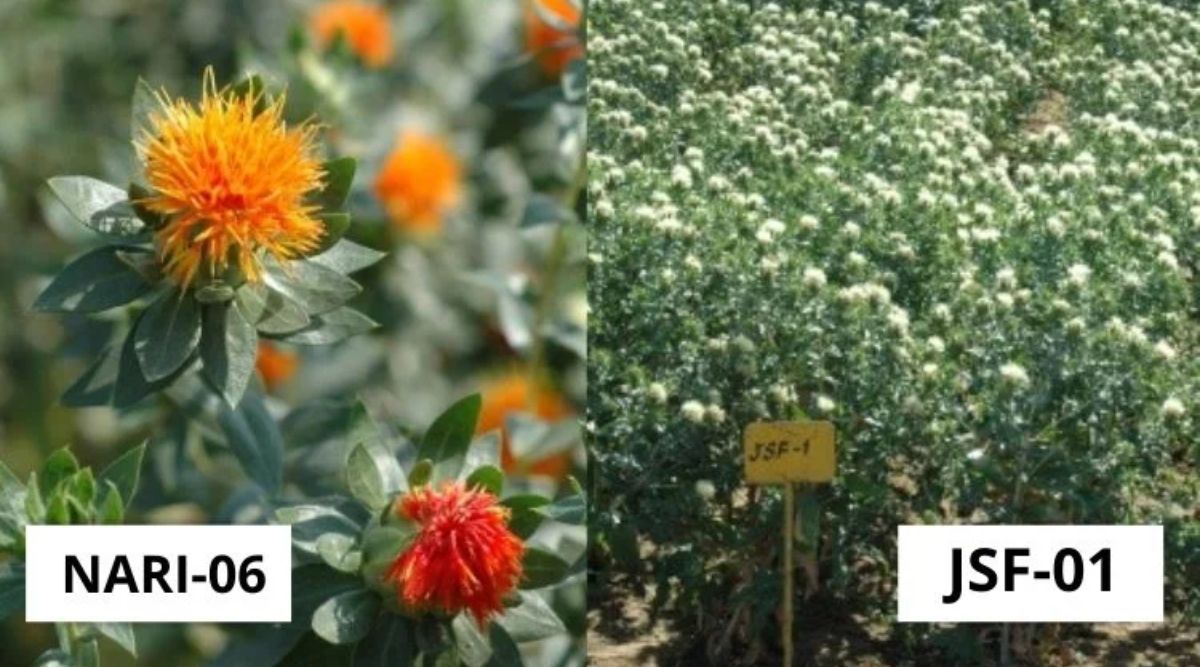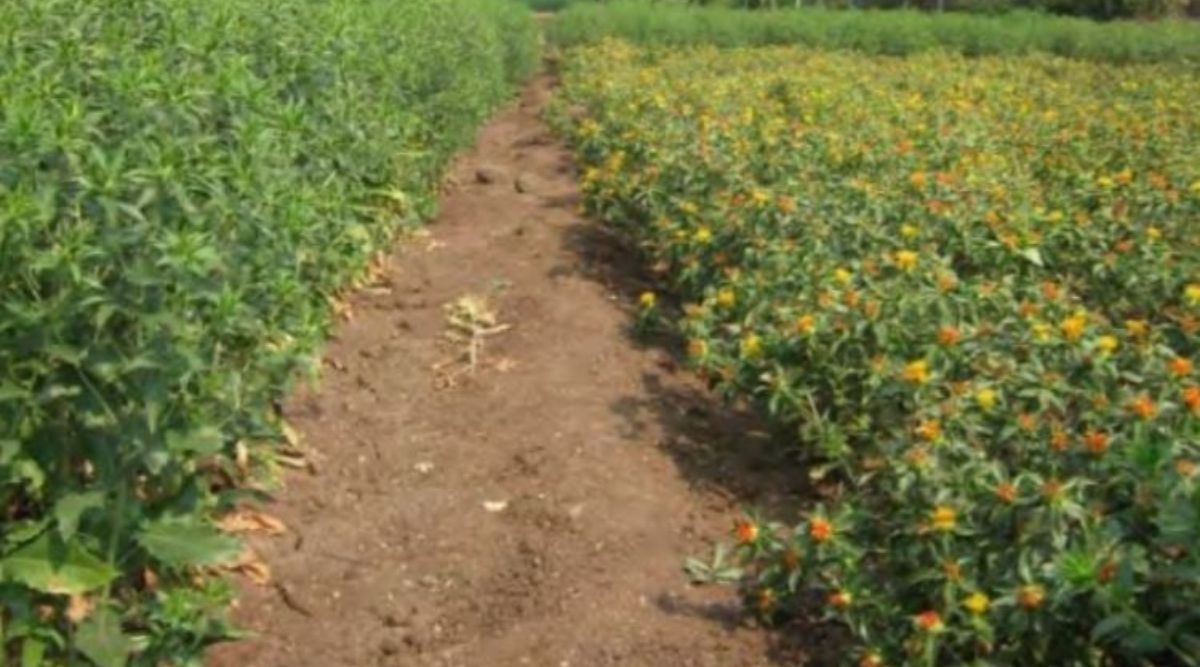Safflower Cultivation: Why is Safflower unique in the crop cycle?
In non-irrigated fields, safflower does not require irrigation and gives excellent yields in black soil. What is the advanced technique to earn good money?
Generally, the time from the last week of September to the last week of October is most suitable for sowing safflower. The temperature should be 15 to 20 degree celsius during the sowing days of safflower. Safflower can be sown in Rabi after harvesting moong, urad, groundnut, or soybean in Kharif. If no crop has been taken from the field in Kharif, then early safflower can be sown in the second week of September. If maize or jowar crop is taken in kharif, late sowing of safflower can be done till the first week of November in rabi.
Advanced Production Technology of Safflower Cultivation
Cultivation of safflower is very useful for those areas of the country with more possibility of drought. Due to its unique ability to tolerate heat, safflower cultivation can be done easily, even when irrigation facilities are limited. Safflower can be easily grown in drought-prone areas or in rain-fed farming after the failure of Kharif crops due to any disaster or in fallow fields by initial irrigation. By the way, safflower yields best in black soil. Since the roots of safflower go deep into the soil, the land should be leveled by plowing the fields twice deeply with a cultivator and by running a rotavator before sowing.
Also Read: High income from cultivation of Ganoderma Mushroom
Improved Varieties of Safflower Seeds
The maturity period of different species of safflower varies from 117 days to 180 days. Varieties with longer duration give higher yields than varieties with shorter duration. It gives a yield of 8.5 to 15 quintals per hectare. The amount of oil found in these species ranges from 28 to 36 percent. Like other oilseeds, safflower cake is also used as animal feed after oil extraction. The improved varieties of safflower seeds are – Malviya Kusum 305, JSF-73, JSF-07, JSF-01, NARI-06, K-65, DSH-129, MKH-11, Prabhani, Kusuma (PVNS-12), PH -06 and H-15.
The maturity period of NARI-06 is 117 to 137 days. Its yield is 10 quintals per hectare. It contains more oil. The flowers of JSF-01 are white, and the plants are thorny. Its grain is big and white. Its yield is 1700 kg per hectare. It gives 30 percent oil. JSF-07 is a thornless variety. Its flowers are yellow when they bloom but turn orange or red when they are dry. Its grains are small and white. Its yield is 1300 kg per hectare. It gives 32 percent oil. JSF-73 is also a thornless variety. Its flowers are also of yellow colour when they bloom but become orange or red when they dry up. Its yield is 1450 kg per hectare. It contains 31 percent oil. Its grain is slightly bigger and whiter than the JSF-07 variety.

Safflower Sowing Method
Before sowing, safflower seed should be soaked in water for 12 hours and it should be sown two-three inches below the soil. In sowing, keeping a distance of about 6 inches between two plants and about one and a half feet between two lines gives good yield. 15 to 20 kg per hectare seed is required for sowing. After sowing the seeds treated with organic or chemical fungicides, the establishment of plants is more by 5-7 percent. The fungicide Thiram or Brassicol @ 3 grams per kg of seed is sufficient for treatment.
Fertilizer Quantity and Method of Application
Nitrogen 40 kg, Phosphorus 40 kg and Potash 20 kg per hectare should be given in non-irrigated fields. Whereas in irrigated fields, the ratio of nitrogen, phosphorus and potash should be 60:40:20. Apart from this, application of 4 to 5 tons of well decomposed cow dung and 25 kg of sulfur per hectare before sowing in the field every third year increases the amount of oil in safflower. In irrigated condition, one-third of the total amount of nitrogen should be given at the time of sowing along with full amount of phosphorus and potash and the remaining two-thirds of the amount of nitrogen should be applied in half after two irrigations.
Irrigation in Safflower Cultivation
One crop of safflower requires 60 to 90 cm of water. Safflower does not require irrigation in non-irrigated fields. But if irrigation is available then two light irrigations should be done. First irrigation should be done on 50 to 55 days after sowing and second irrigation should be done on 80 to 85 days. Irrigation should be done by sprinkler or drip method. Irrigation should not be done at all when flowers emerge in safflower plants.

Weeding in Safflower Cultivation
To get good yield in safflower crop, weeding should be done about 20 days after sprouting of the plants. So that the hard soil crust breaks from above and the cracks in the ground are filled. At the time of weeding, the distance between healthy plants should also be corrected.
Harvesting Safflower
The temperature at the time of harvesting of safflower crop should be 32 to 35 degree celsius. Thorny species are difficult to harvest by hand when the crop is ripe, because their leaves have thorns, while the stem is thornless. That is why harvesting should be done with a sickle by wearing a glove or wrapping a cloth in one hand. No special precaution is required in harvesting thornless species. If the area under safflower cultivation is large, then combine harvester can also be used for harvesting.
Also Read: Why Safflower Cultivation is a boon for drought-prone fields?
Contact us – If farmers want to share any valuable information or experiences related to farming, they can connect with us via phone or whatsapp at 9599273766 or you can write to us at “[email protected]”. Through Kisan of India, we will convey your message to the people, because we believe that if the farmers are advanced then the country is happy.
You can connect with Kisan of India on Facebook, Twitter, and Whatsapp and Subscribe to our YouTube channel.



